6 Questions to Answer Before Buying a New Fireplace
Thinking about adding a beautiful new fireplace to your home? Here are six questions to answer before you start shopping.
Do you want a brand new fireplace, or do you want to upgrade an existing masonry fireplace?
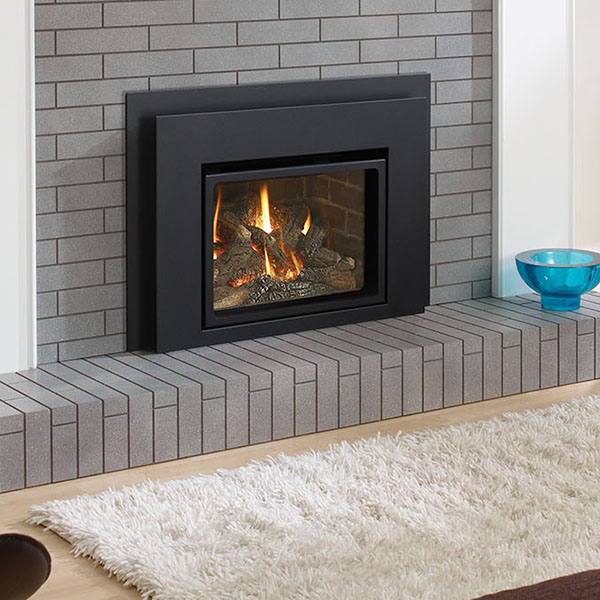 Many people shop for new fireplaces because they’re tired of trying to heat their homes with their existing masonry fireplace. If you really like your current fireplace, a new fireplace insert might be the right move. Inserts fit right into your masonry fireplace’s firebox and can run on gas or wood. With a fireplace insert, you don’t have any construction to undertake and you get to keep enjoying your old, familiar fireplace.
Many people shop for new fireplaces because they’re tired of trying to heat their homes with their existing masonry fireplace. If you really like your current fireplace, a new fireplace insert might be the right move. Inserts fit right into your masonry fireplace’s firebox and can run on gas or wood. With a fireplace insert, you don’t have any construction to undertake and you get to keep enjoying your old, familiar fireplace.
If it’s a new fireplace, where do you want it installed?
Modern zero-clearance (ZC) fireplaces are factory-built and can be installed in just about any wall in your home. Heavily insulated, ZC fireplaces are available in wood and gas models.
It pays to put a little thought into where you want to install your new fireplace to make sure you get the most out of its beauty and heat production. Your fireplace installation technician will help you with this decision.
How much heat do you want?
Both fireplace inserts and zero-clearance fireplaces come with a range of heat-efficiency ratings, which measure the total heat produced by the appliance vs. how much of that heat will be available for your home as opposed to going up the chimney. The size of the area you’ll be heating is the main factor in choosing the level of heat required from your new fireplace. You don’t want an ultra-powerful fireplace in a 10” X 15” room, nor do you want a smaller, more economical model if you need to heat 800 or more square feet.
What’s the ideal look for your new fireplace?
ZC fireplaces and fireplace inserts from top makers come in an attractive range of shapes, finishes, colors and design styles. From sleek and contemporary to traditional and rustic, you can choose the perfect look to compliment your home’s décor.
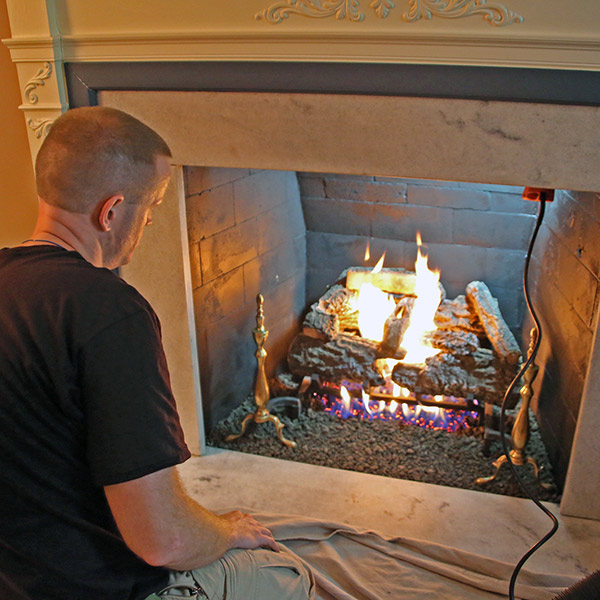 What’s the ideal fuel?
What’s the ideal fuel?
Many people love wood-burning fireplaces. Many other people don’t like the extra work involved in running a wood fireplace, so they go with gas. Choosing the ideal fuel for your new fireplace really comes down to how much you want to be involved in the process of running the appliance. Wood fires are nostalgic and aggressive, but wood needs to be bought, stored and loaded into the firebox. Gas fires start instantly and are easy to control, and very little maintenance is required. But they won’t give you quite the same traditional look and aroma as burning logs.
How much maintenance do you want to do?
As noted above, wood fireplaces require a little more work than gas fireplaces. Any wood-burning appliance causes creosote to form in the vent system. Creosote is flammable and needs to be professionally cleaned at least once a year. Also, wood can be messy, and you’ll have to deal with ashes, soot and wood chips as part of regular maintenance. Gas fireplaces, on the other hand, are by nature very clean. If you’re the type who likes to enjoy a fireplace but isn’t interested in messing with it, a new gas insert or fireplace is ideal for you.
Fluesbrothers Chimney & Fireplace of Kansas City, KS, can help you decide on the perfect new fireplace or fireplace insert for your home. Our experienced technicians will then install your appliance safely and correctly. Get on the road to more heat by calling (913) 236-7141.
The post 6 Questions to Answer Before Buying a New Fireplace appeared first on Fluesbrothers Chimney Service.
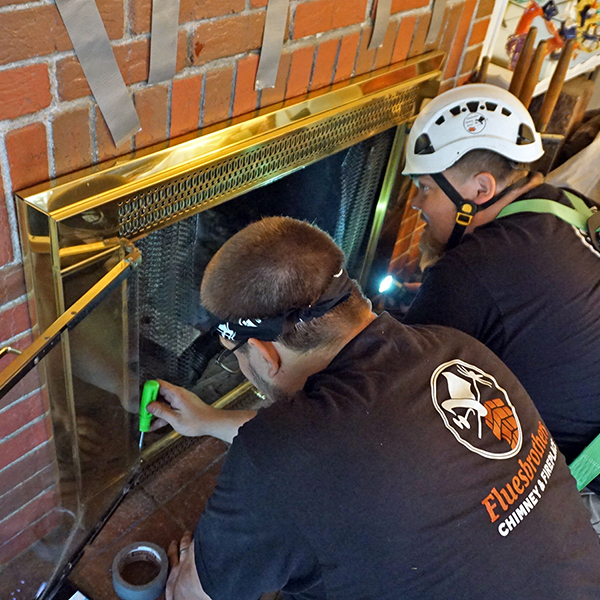 With fireplaces being among the most desirable feature home buyers want, home builders are now offering fireplaces as a standard or optional feature in many new homes. These fireplaces are generally built using builder-grade materials. Builder grade materials are considered medium quality, a step up from economy-grade, the lowest quality on the grading scale. It uses mass-produced, lesser quality materials designed to replicate a
With fireplaces being among the most desirable feature home buyers want, home builders are now offering fireplaces as a standard or optional feature in many new homes. These fireplaces are generally built using builder-grade materials. Builder grade materials are considered medium quality, a step up from economy-grade, the lowest quality on the grading scale. It uses mass-produced, lesser quality materials designed to replicate a 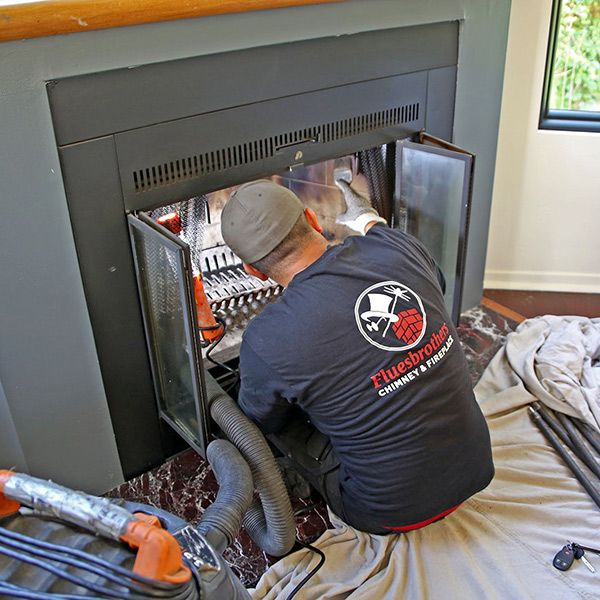 A higher quality fireplace
A higher quality fireplace

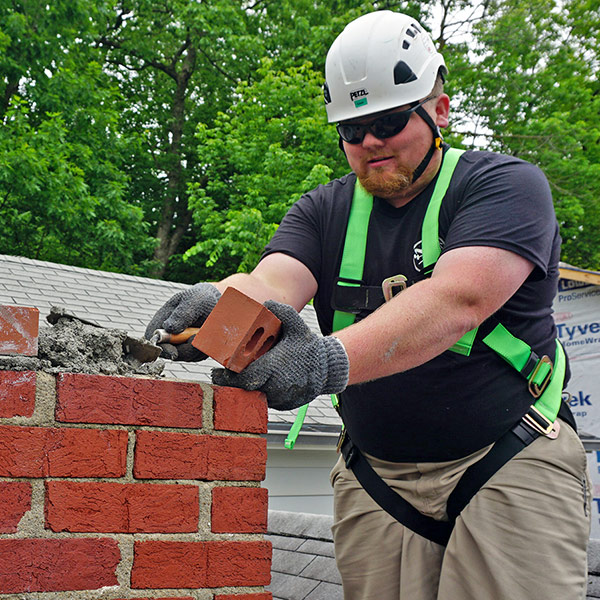 Old age: Like just about everything, chimney bricks and the mortar that connects them have lifespans. Older bricks are more likely to decay simply because of old age as well as due to the causes listed below.
Old age: Like just about everything, chimney bricks and the mortar that connects them have lifespans. Older bricks are more likely to decay simply because of old age as well as due to the causes listed below.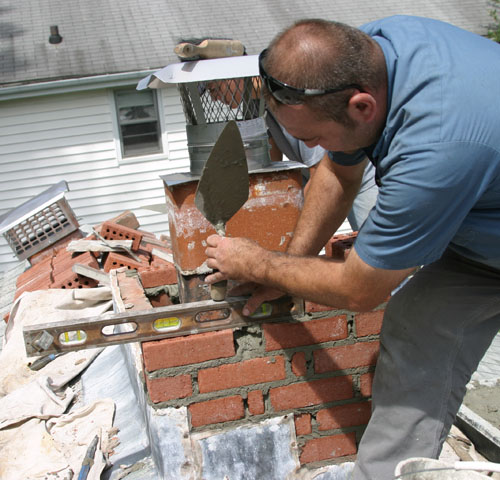 As dire as the results of ignoring spalling bricks can be, solving the problem usually isn’t difficult. The idea is to catch it early. This is accomplished by your own periodic inspections of the chimney’s exterior as well as
As dire as the results of ignoring spalling bricks can be, solving the problem usually isn’t difficult. The idea is to catch it early. This is accomplished by your own periodic inspections of the chimney’s exterior as well as  A properly fitted chimney cap
A properly fitted chimney cap Outside mount caps are custom-built
Outside mount caps are custom-built
 Water damage
Water damage

